Suggestions for Home Neck Therapy: What Can Really Help?
Neck pain occurs frequently and approximately 70 percent of adults will have neck pain at some time in their life. Treating neck pain early is vital because if it is left untreated, it can become a chronic issue resulting in persisting pain and other health related problems. Neck pain can result in fatigued muscles and this can have a negative effect on posture, muscle strength and the ability to do simple activities such as reaching overhead and even reading.
 With an aging population and almost 90 percent of office workers using computers, which are known to be a contributing factor to neck pain and weak postural muscles, treating neck pain early is important and home neck therapy can be one of the best methods to prevent consequences of persistent neck pain and the effect it can have in your daily life as well as work productivity.
With an aging population and almost 90 percent of office workers using computers, which are known to be a contributing factor to neck pain and weak postural muscles, treating neck pain early is important and home neck therapy can be one of the best methods to prevent consequences of persistent neck pain and the effect it can have in your daily life as well as work productivity.
Home neck therapy has been made easier than ever before with the advent of new products previously only available in clinical settings, as well as improvements to methods that have been around for many years. However, there are many reasons for neck pain, therefore, it is important to have any symptoms checked with your health care provider prior to using any home treatment for neck pain.
Home Neck Therapy: Methods
In general, you may wake with a neck stiffness, have a touch of arthritis or your neck may be sore and tired from a long day at work. These are issues that can benefit from home treatment.
Over The Counter Medications
One of the easiest ways to use home neck therapy is to take over the counter medications. There are many you can take and you should be aware of any side effects like upset stomach or any contraindications regarding cardiovascular issues that your doctor may place upon you for your specific heath conditions. These medications can often help with headaches, a frequent complaint with neck pain. They can help with pain and provide temporary relief, providing an opportunity to look into more natural means of using therapy at home for neck pain discussed below.
Topical Analgesics
A popular method for home neck therapy is the use of pain relieving patches, ointments, creams, sprays and lotions. Many of these contain substances which can help mask pain. Caution should be taken using these products which may cause skin irritation. Additionally, hands should be washed after applying these types of therapy to prevent any eye irritation. Since these may alter skin sensation, you should be careful with hot water or using a heating pad. All cautions considered, they can be an easy to use and inexpensive way to alleviate sore and stiff muscles and help to restore motion.
Massage Therapy
While no machine can duplicate the trained and experienced hands of a massage therapist, new products have become very popular that provide massage for home neck therapy. A good electric powered massager can help to relax stiff muscles, increase blood flow and provide beneficial motion to the joints. These products are often lightweight and can be used lying down as well as sitting. Because neck muscles tend to be small and thin, especially in women, a neck massager should be used that is specific for the neck. Many of these massagers will indicate use for the lower back as well as the neck, however, caution must be exercised in using a massager that has wide rollers which will not effectively target the neck muscles.
Additionally, many are overpowering as they are designed for use in multiple areas. Combining a massager that is too large and too powerful means you must bend and twist your neck to get at the right angles and the excessive force may actually do more harm than good. With a properly designed electric powered and non-powered neck massagers, the treatment can be very beneficial, not only in physically treating the muscles and joints, but can have a beneficial emotional effect as well.
Heat Therapy
Unfortunately, as good as hot bath can feel, it is difficult to have your neck positioned properly for a good therapeutic benefit. A nice shower enables the benefits of moist heat directed to the neck in an efficient manner, however, it is not always practical or cost effective to spend 20 to 30 minutes in the shower an multiple occasions. Some popular methods are chemical patches which produce heat, however, they produce a dry heat which can cause inflammation and does not penetrate as deeply as moist heat. Fortunately, moist heat packs that are anatomically designed to fit the neck are a great method of home neck therapy. They can be either heated in the microwave or plugged into an outlet to provide a consistent level of moist heat. These heat wraps also help with support of neck muscles during treatment which helps relax the neck.
Cold Therapy
Cold is a great way to help minimize inflammation, primarily with acute or recent injuries. It can be beneficial, especially in hot climates. Ice helps reduce pain by numbing the area as well as decreasing blood flow to minimize swelling. While a bag of ice can be used and even a bag of frozen vegetables, which are readily available in most homes; new cold neck wraps, much like their heat wrap cousins, are anatomically designed to provide cold therapy directly to painful neck and shoulder regions and can be supportive as well.
Supportive Pillows
Chances are you will spend anywhere from 6 to 8 hours sleep at night, or at least trying to sleep. Therefore, one of the most beneficial treatments you can do at home is to have a pillow that supports your neck in a healthy posture. Chances are you may spend a lot of time at a computer, driving or other tasks which are often done with poor posture. Spending the night with your neck in a bad position will only amplify the problem. Well designed, supportive pillows for the neck can help maintain a balanced posture in both back and side sleeping positions. This allows the muscles to relax and helps prevent irritation of joints and other sensitive structures like nerves. Waking up after having a relaxed and restorative sleep will go a long way to helping neck problems and may even help to prevent them.
Neck Traction
Traction is a method to lift the weight of your head from your shoulders and provide relief from the weight of gravity. Your head weighs approximately 10-12 pounds and, over the course of the day usually spent in poor posture, can cause pressure on muscles, which are usually fatigued, as well as ligaments, joints, spinal discs and nerves. With the advent of new, easy to use neck traction products, relief can be a matter of placing on a collar and pumping up to a comfortable level. This can be done conveniently in a sitting position, reclining or lying down anywhere in the house. They are compact, lightweight, affordable and easy to use, providing relief once only afforded in clinical settings.
Stretching & Exercises
There are simple stretches and exercises for the neck that can be done at home which have the capability of producing immediate results. Spending much of the day in a fixed or stationary position, the neck muscles become weak and fatigue easily. This places more stress on structures like ligaments and joints. As the muscles become de-conditioned, their ability to produce smooth and efficient movements becomes hindered. Poor neck muscle tone allows posture to become distorted as the muscles weaken in layers, with the deeper muscles weakening which interferes with the normal stabilizing mechanism, permitting alterations in proper alignment leading to distortions in the ligaments, joints and discs. Stretching and exercising can help strengthen the muscles and also helps to relieve stress. Simple stretches and exercises are easy to do and require little time, as well as provide the most economical method of home treatment for neck pain.
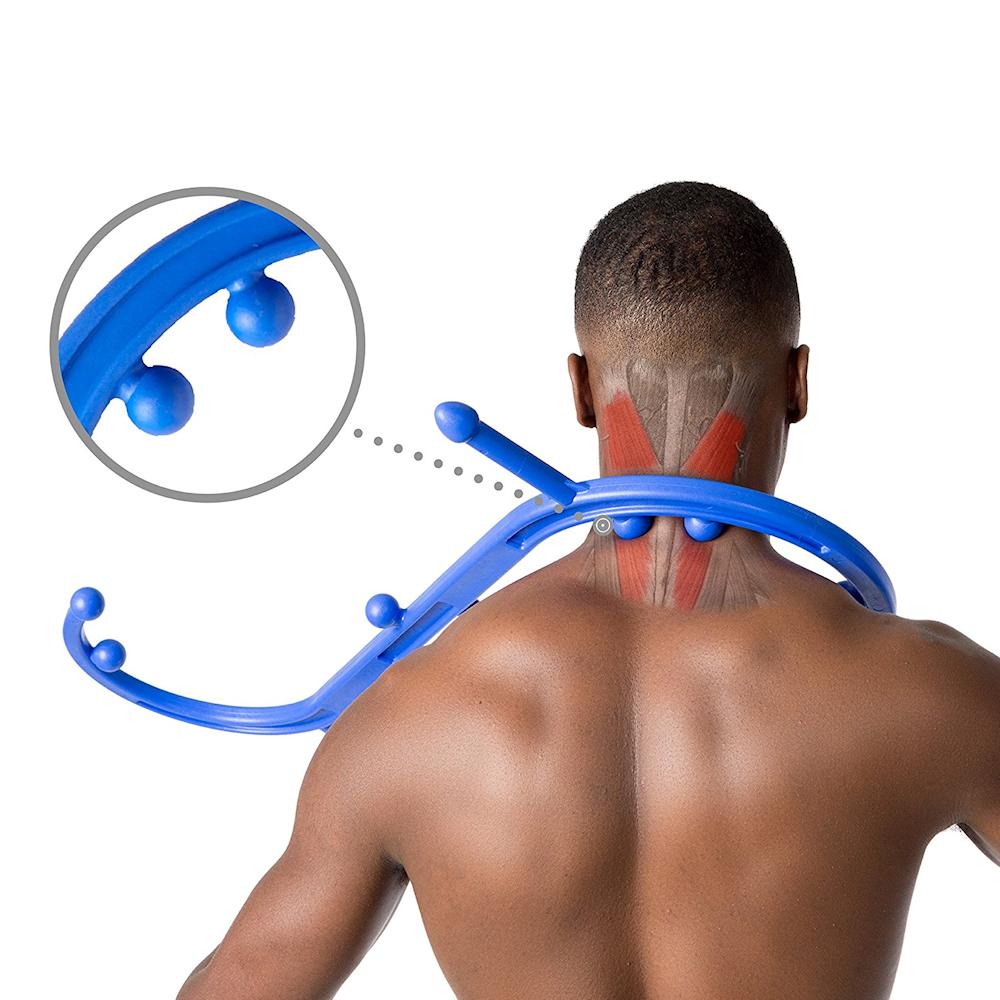
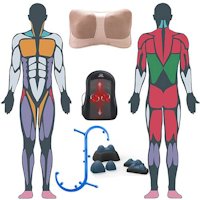 Muscle Therapy Tools
Muscle Therapy Tools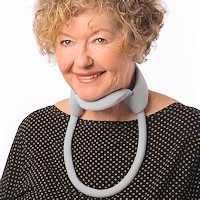 Head Supports
Head Supports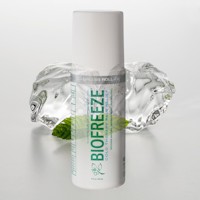 Topical Pain Relievers
Topical Pain Relievers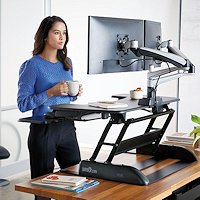 Ergonomic Aids
Ergonomic Aids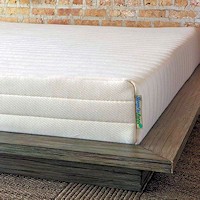 New Mattresses
New Mattresses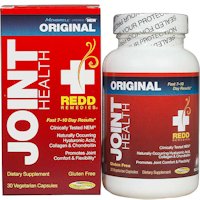 Relief Supplements
Relief Supplements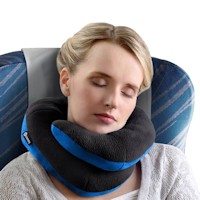 Special Pillows
Special Pillows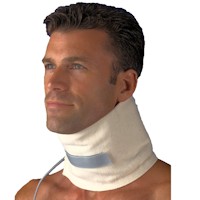 Heat Therapy
Heat Therapy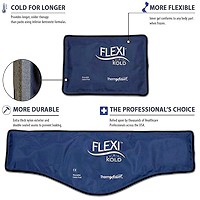 Cold Therapy
Cold Therapy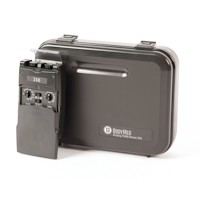 TENS Therapy
TENS Therapy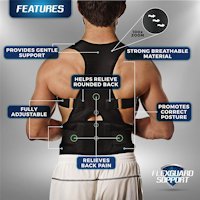 Posture Braces
Posture Braces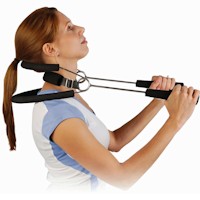 Neck Stabilization
Neck Stabilization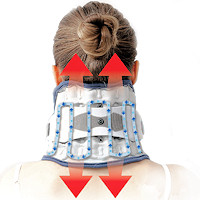 Neck Traction Devices
Neck Traction Devices Cervical Pillows
Cervical Pillows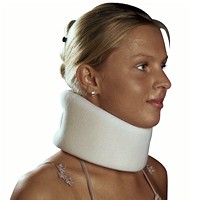 Neck Support Collars
Neck Support Collars